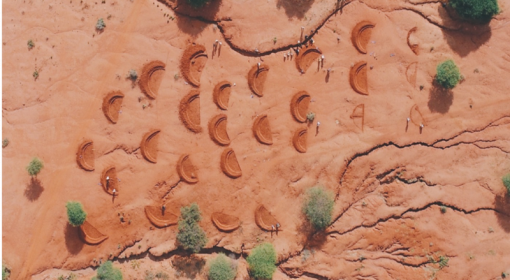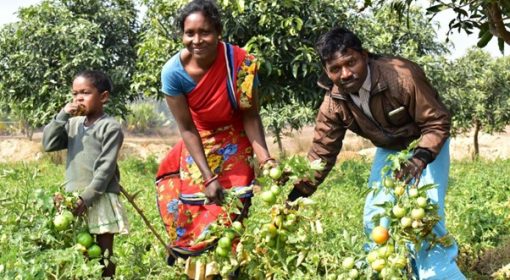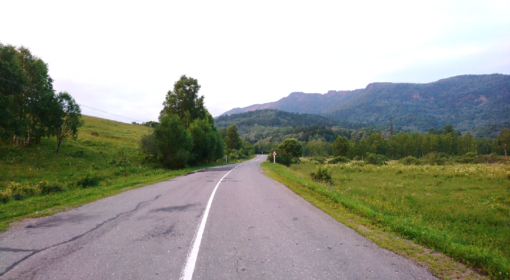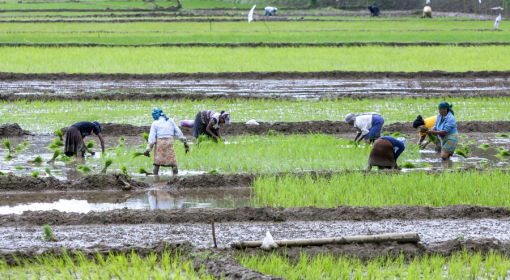Posted by Diego Garcia Landarte, Martin van Beusekom and Ruben Borge
January 09, 2014
Receiving two meters of good quality top soil – in case of bad soil conditions – is what every farmer would wish for. Instead of working intensively on soil improvement for several years with limited production, farmers would be able to increase production from one day to aanother.
In Solulta, Ethiopia, this is reality. A 30-kilometre road improvement project between Chancho and the regional cement factories has created these ‘un-expected’ side benefits. ‘Unexpected?’ No. The constructers (Ethiopian Road Authority) and farmers with constraining soil quality or water logging problems know very well how to find each other. The production of good quality soil as result of the road-levelling has generated this exchange.
When laying the road, the top soil layer- being the most fertile part of the soil with the most organic matter content and biological activity- is removed. In this way, a total of 180,000 m3 (~30 km road length * 0,4 meter depth * 15 meter width) of ‘fertile’ soil needs to be removed. This is about 6,000 truckloads (assuming the average truck capacity to be about 30 m3). As soil transport and disposal constitute the main costs in almost any road construction project, nearby disposal facilities are wished for, as to reduce the share of this item in the total budget. Farmers in need of good quality soil are therefore a welcome client.
There are several reasons why farmers in Solulta woreda wish for good quality soil layers on top of their land:
(1) to reduce water logging – farmers facing water logging problems solve them by topping up their land with a 2-metre layer of soil;
(2) improving soil quality (depth, aeration, structure)- where agricultural land is unproductive;
(3) creating additional arable land – on historically unproductive grazing/prairie land.
Due to both parties’ mutual interests, the Ethiopian Road Authority trades soil to the farmers for free. For farmers, it is a matter of high priority to change current soil fertility management so as to preserve the ‘newly arrived soil.’ In that regard, a particular short-term rent-seeking practice is a point of concern. “Farmers welcome soil, as they can generate high yields without applying fertilizers. However, after a couple of years however, they are back to the old situation, as the soil is exhausted again,” says Girma, head of the Agricultural Office in Solulta.
Ruben Borge (RockinSoils) and Solulta Farmer Training Centrer work with the farmers in the area to regenerate farm soil quality, using another by-product of road construction: basalt rock dust. The fine dust is created at the several crusher sites along the road, producing gravel for road construction. The dust is not appropriate for road construction. However, it is a rich source of micronutrients (Magnesium, Iron, Boron, Zinc, etc.) when especially mixed with locally available organic waste. Additionally, it helps improve biological activity in the soil.
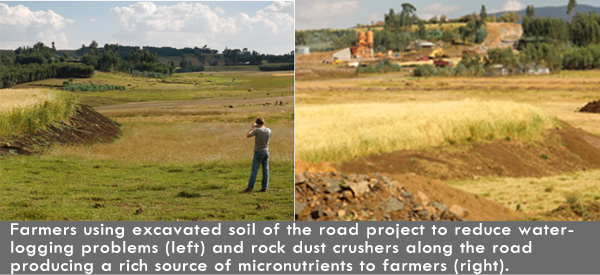
Last year’s trials, funded by Dutch NGO Impulsis, demonstrated to local farmers the productivity of organic fertilizers as compared to chemical fertilizers and no fertilizer use. First results (from trials the Farmer Training Centre in Holeta) on Faba bean show that well produced local organic fertilizer competes favorably with chemical fertilizer. The organically fertilized faba beans show better root development (including nitrogen binding noodles) and more pods per plant. These results coincide with the trials of farmer Abere aho is adopting this technology in the north of the country. Tests in teff, barley, wheat, garlic, maize and potatoes show similar results.
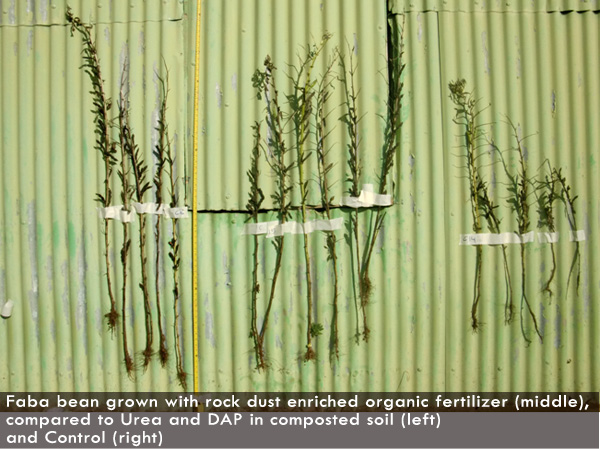
So, besides unlocking regions by improving logistic networks, road projects can also create sustainable spin-off for a sustainable local agricultural development. So, ‘Roads for Transport’ can also serve as ‘Roads for Food’!
